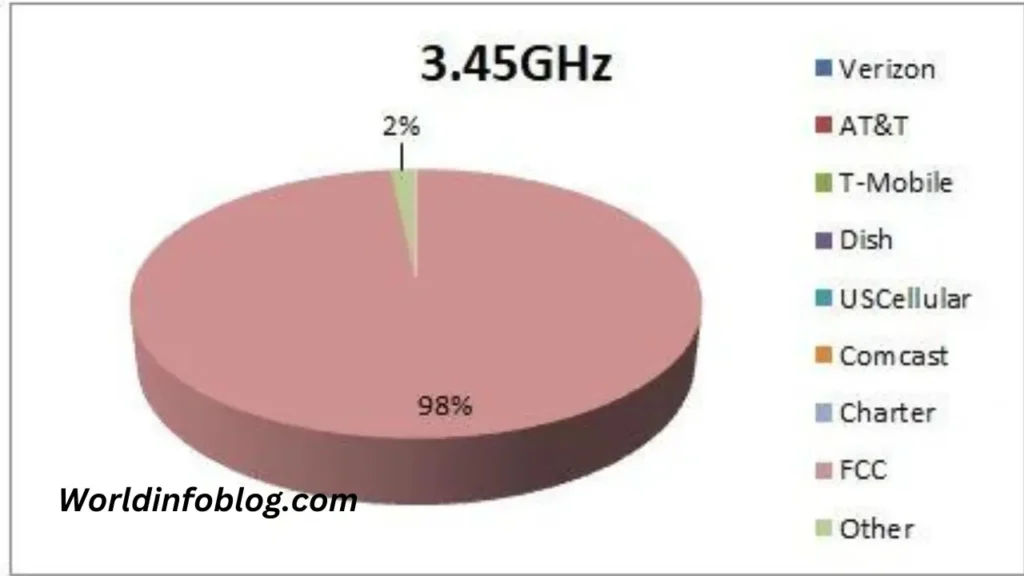Introduction to 3.45 ghz band global footprint
UScellular announced today the launch of its mid-band 5G network, using the spectrum it acquired in the FCC’s auction.
Chicago-based company announced that its 5G midband network would be available by the end of June in a majority of Illinois, Iowa, and Wisconsin. This includes sections of Rockford (Ill.), Des Moines (Iowa), and Milwaukee.
Initial rollouts will also include communities in Maine, Missouri Nebraska Oklahoma Oregon Virginia, and Washington. UScelluar’s 5G midband network will cover over 1 million homes in its service footprint by the end of this year.
In a press release, UScellular Chief Technology Officer Mike Irizarry said that mid-band is the sweet spot for 5G. It offers broad coverage, low latencies, and fast speeds. This allows more people to stay connected to what’s important at home or while on the go. Mid-band will be a key component in enhancing and expanding the reach of High-Speed Internet as we near 100,000 customers this summer. In the next few years, we’re going to make it a top priority to bring this technology to even more communities.
UScellular spent more than $579 million in the auction 110 for 3.45GHz spectrum. It also purchased a C-band spectrum in 2021 for approximately $1.46 billion; this spectrum will become available later on this year.
UScellular didn’t need to coordinate with the Department of Defense for the sites at 3.45 GHz that were part of this launch. However, DoD coordination will be needed in the future for certain sites, according to the company spokesperson.
Irizarry, speaking at the Wireless Infrastructure Association’s Connect(X), conference in New Orleans in the last month, said that the company anticipates a “rapid acceleration” of its mid-band spectrum 5G deployment in 2024.
The company uses infrastructure equipment from Nokia and Ericsson.
The spokesperson stated that there are currently a few consumer devices that support mid-band technology and in the future, more devices will be available. The router is mid-band capable of high-speed Internet.
By the end of 2024, nearly 3 million homes in the company’s operating area will have 5G midband connectivity.
FAQs Regarding the Global Coverage of the 3.45 GHz Band:
Q: Why does 5G require the 3.45GHz band?
A: The 3.45 GHz band has a sweet spot. Its excellent coverage and balance of capacity make it possible to achieve higher data rates and more reliable connections and eliminate the need for the large infrastructure needed for higher frequency bands. This makes it ideal for urban and suburban settings.
Q: What is the difference between 3.45GHz and other 5G bands?
A: Data rates and capacities of the low-band frequencies are higher than 3.45 GHz. It can’t achieve the high speeds of the mm-wave bands (beyond the 24 GHz range), but it can cover more area with less base stations. This makes it a cheaper and more useful option for global 5G rollout.
Q: Is the 3.45GHz band problematic?
As with any technology, implementing 5G at 3.45GHz poses unique challenges. In areas with high populations, managing interference is crucial. Moreover, network operators might have to invest in costly and time-consuming hardware and infrastructure.
Q: What are the benefits of using the 3.45GHz band for consumers?
Customers can expect faster upload and download speeds, lower latency, and more reliable connections. Video streaming, online gaming, smart home appliances, and Internet of Things applications will all run better.
Q: What effects does the 3.45 GHz spectrum have on non-telecommunications industries?
A. The 3.45GHz spectrum will not only improve mobile broadband but also transform many sectors. Telemedicine and remote surgeries can be helpful to the healthcare industry. Manufacturers can also use it for automating processes and monitoring them in real time. There are many revolutionary and diverse uses.
Conclusion:
The 3.45GHz band is unquestionably a critical component of the global deployment 5G technology. Its well-balanced features make it a contender for fulfilling the promises of 3G, such as increased speed, reduced latency, and reliable connections. As long as countries accept and use the frequency, we can expect major improvements in communication and interaction with the digital universe. Keep an eye on the 3,45 GHz band, as it’s poised to revolutionize technology.
For more information 3.45 ghz band global footprint:



